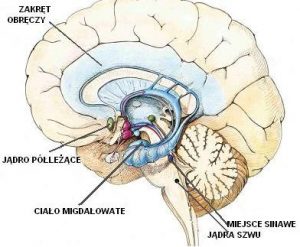Face blindness or prosopagnosia


Last modified: 28-03-2020
It seems obvious to us that we recognize our friends, neighbors and family, we can see them in a group of strangers and recognize them even if they change their hair style or dress. However, there are people for whom this is a problem. Prosopagnosia, i.e. the inability to recognize a face, can make life much more difficult.
Importantly, prosopagnosia is not that we do not remember how we know someone or we do not remember his/her name. Familiar persons seem strangers to people with face blindness. They don’t know they know them at all. It happens that they cannot recognize even their immediate family, a person whom they met 5 minutes earlier or themselves. However, prosopagnosia is not always so intense. It is estimated that about 2% of the population suffers from severe prosopagnosia, but about 10% may have mild form of this disorder. Such people have no problems recognizing family and close friends, but they may have a problem with further friends. The ability to recognize faces has a normal distribution, i.e. most people have an average ability to do so, while on the edges of the curve there are a small number of people with an unusual ability. On the one side, there are people with prosopagnosia, smaller or larger, and on the other side, people with above-average face recognition ability – who can recognize a friend they saw 5 minutes 10 years ago or a seller from a store they have visited once, a year ago.
How do people with prosopagnosia cope?
People with face blindness recognize people through other tips than the appearance of their faces. By their voice, way of walking, moving, or by the characteristic features of the face, e.g. protruding ears, mole or unusual hairstyle. Context also often helps them. For example, they can recognize a neighbor by usually walking with the dog they recognize. It is enough, however, that a neighbor once goes out without a dog and is already considered a stranger. A problem for people with prosopagnosia are also people who do not have any characteristic features, especially if they are encountered in an unusual environment. It is easier for them, for example, to recognize their teacher when they meet him at school than on the street.
What is the cause of prosopagnosia?
The causes of face blindness are not yet fully understood, but it is known that fusiform gyrus and especially it part – fusiform face area (FFA) plays a role. Prosopagnosia may occur as a result of brain damage, e.g. after an accident or stroke, but is more often congenital. It is interesting that people with prosopagnosia often also have topographic agnosia – they get lost even in known places and may even have problems getting home. Some of them also have problems recognizing other specific things, e.g. distinguishing apple from pear or pigeon from crow, or recognizing handwriting. All this requires holistic processing, while people with agnosia need to remember the details to be able to recognize something. Just as the face they can recognize only by some characteristic feature, just as moving around the environment they must pay attention to the characteristic points, because they can not create in the mind a cognitive map of the environment. It is similar with the handwriting. When we often see someone’s handwriting, we begin to look at it holistically and immediately recognize it. People with this type of agnosia may have trouble recognizing even their handwriting and may recognize the handwriting only if it has a certain characteristic feature. For many people with prosopagnosia, however, only faces are a problem.
References
- Ślepota twarzy in: Oliver Sacks “Oko umysłu”, Zysk i S-ka, 2011, s. 101-132 (polish translation of “The Mind’s Eye”)
- faceblind.org
Author: Maja Kochanowska






Add comment